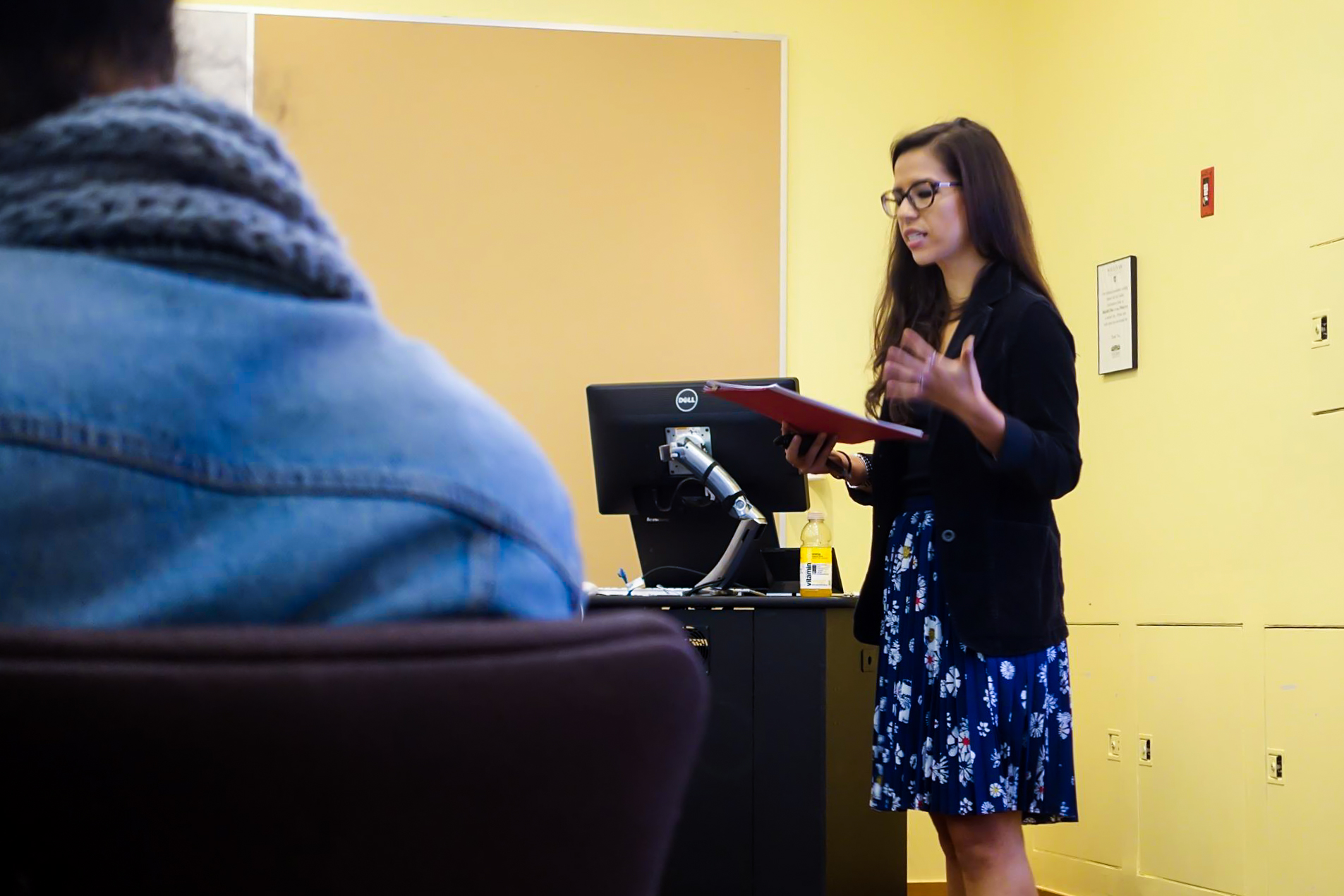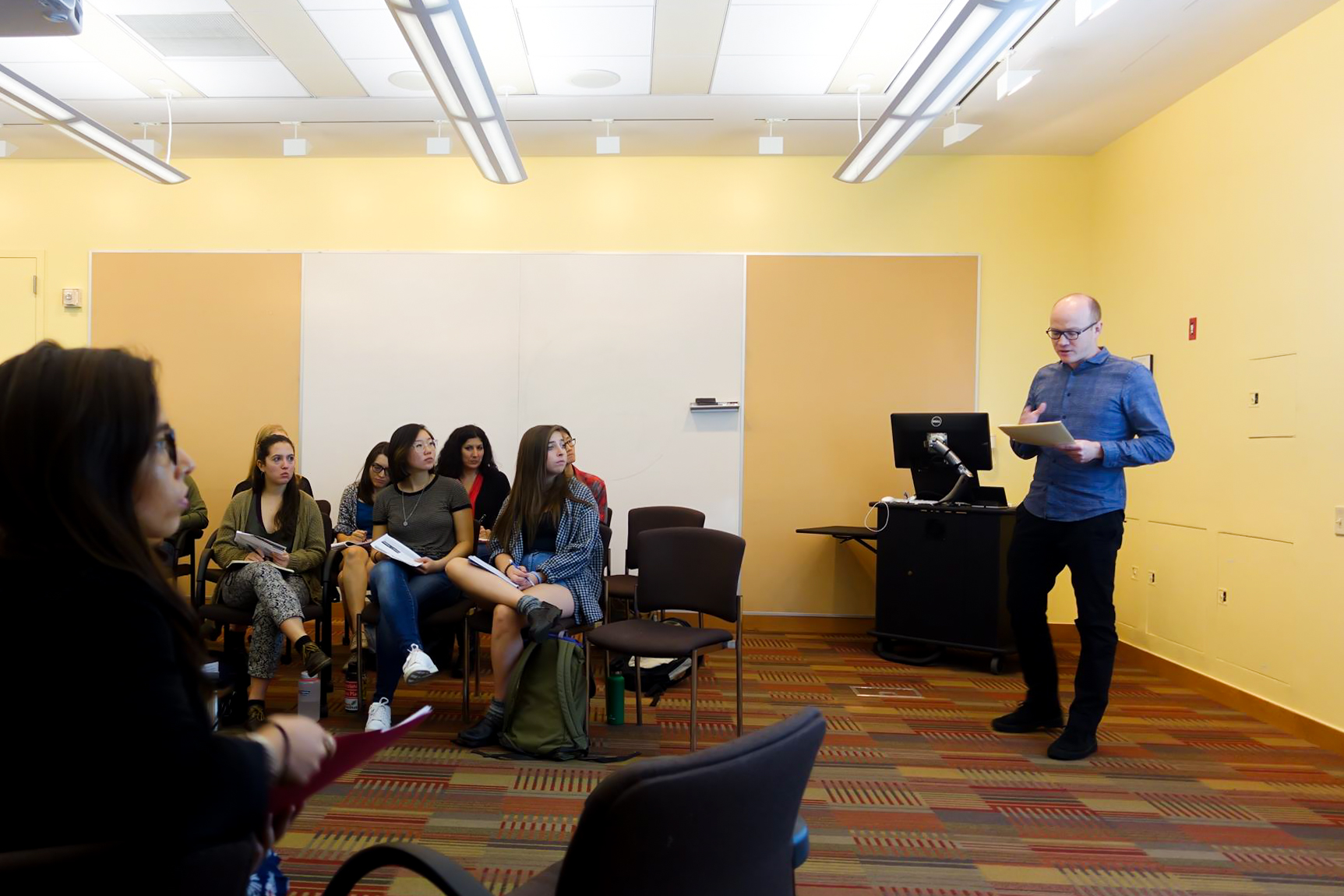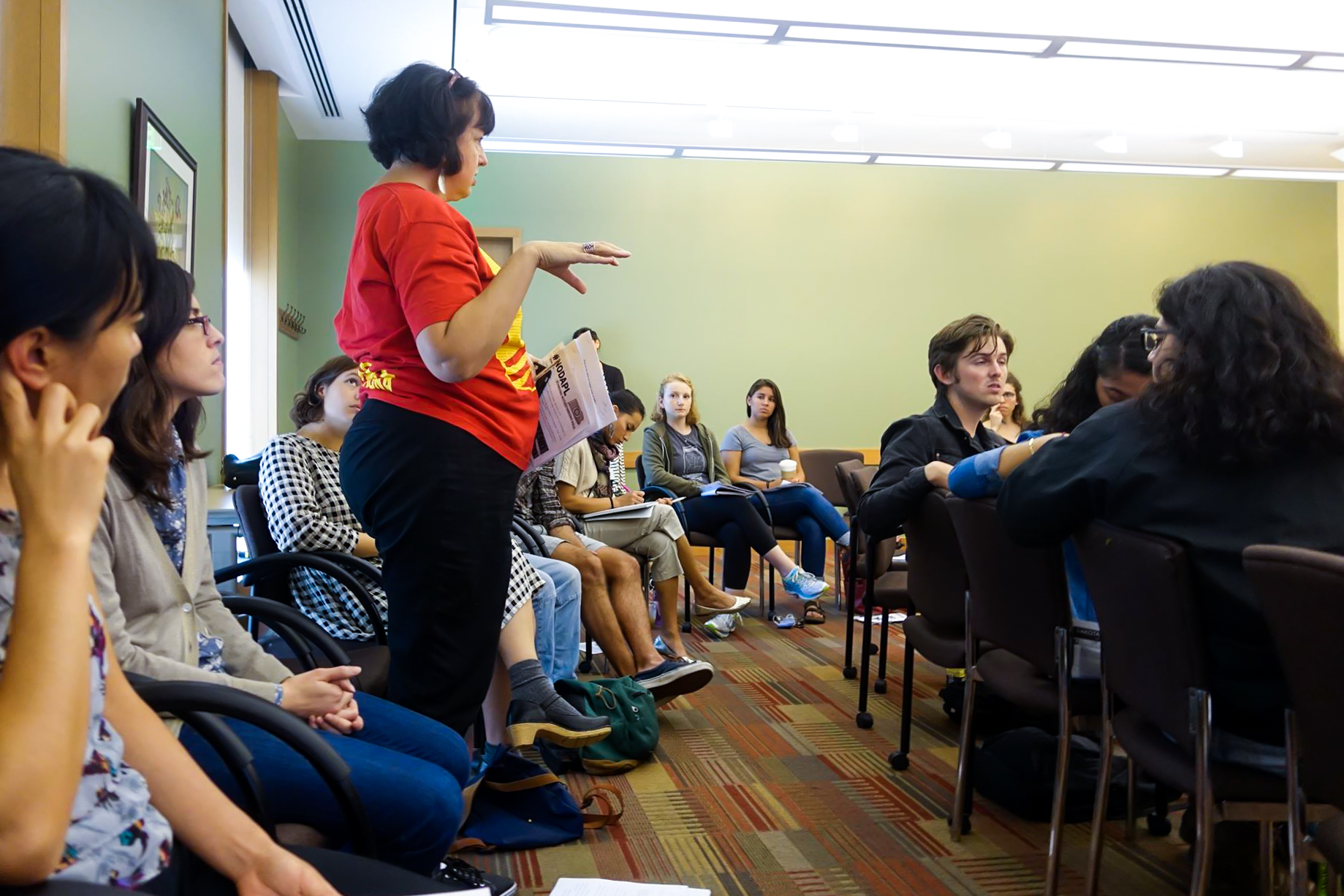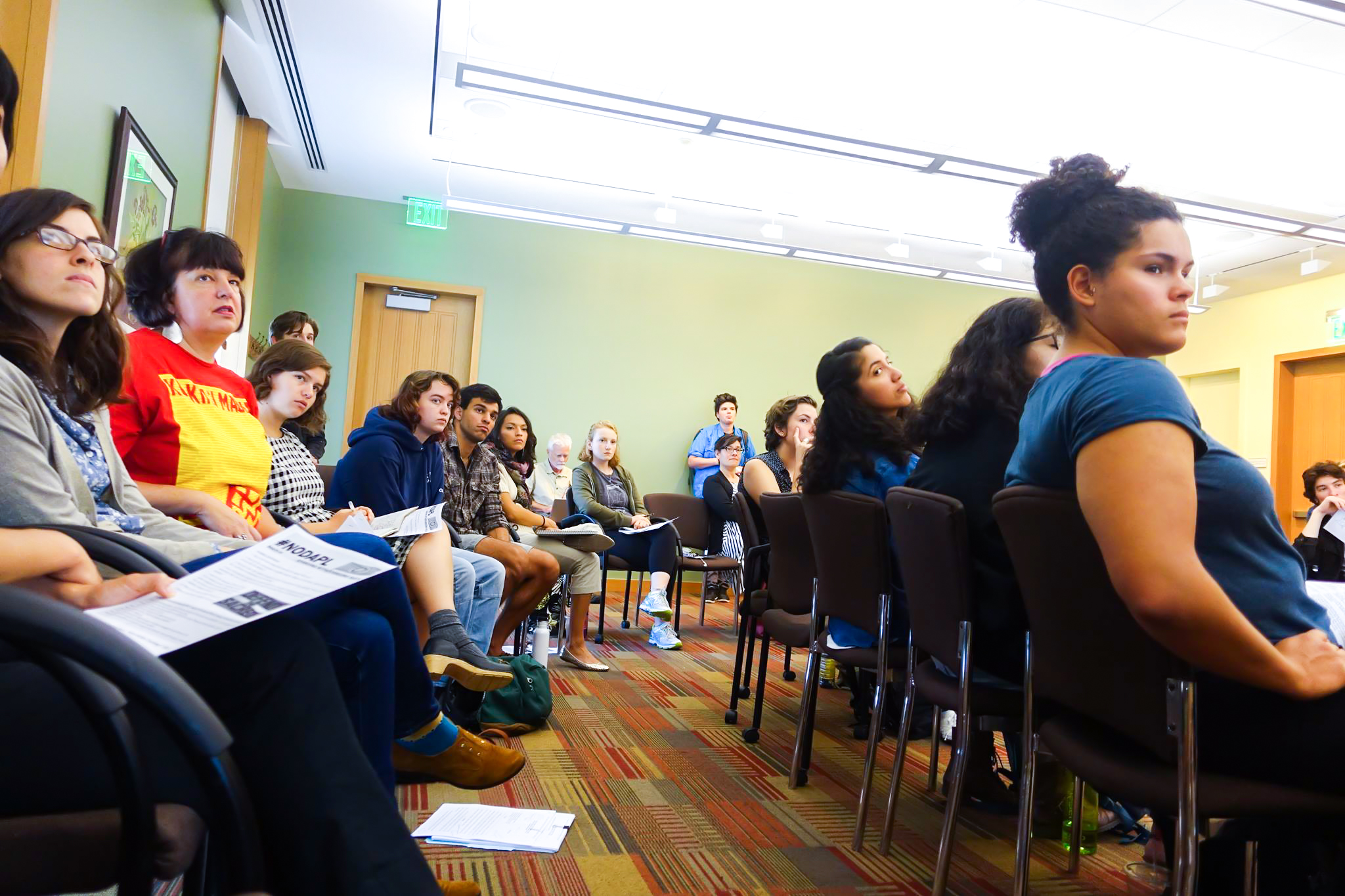This is part one of a two-part article. The second installment will be published on Friday, Oct. 14.
On Friday, Oct. 7, professors, students, and the Middletown community came together for “White Buffalo Teachings.” A two-part event, it consisted of “Standing with Standing Rock #NoDAPL Teach-In,” followed by “Prophecies, World Peace, and Global Healing: The Return of the White Buffalo.” The talk featured Chief Arvol Looking Horse, 19th Keeper of the Sacred White Buffalo Calf Pipe and Bundle, and spiritual leader of the Lakota Nation. Chair of the American Studies Department Professor J. Kēhaulani Kauanui, Visiting Assistant Professor of Anthropology Jacob Doherty, Earth and Environmental Science Professor Dana Royer, and postdoctoral fellow of American Studies Maria John facilitated the teach-in.
“Standing with Standing Rock #NoDAPL Teach-in,” the live-action FAQ, focused on colonial infrastructure, environmental degradation, legal and sovereignty issues, and frameworks for understanding the Dakota Access Pipeline (DAPL) case.
“I want to start by acknowledging that we are on Wangunk traditional homeland…they’re amidst us,” Kauanui said. “Well, we’re amidst them. [People] in the field are trying to respond ethically to the call that the Standing Rock Sioux put out to the whole world. This is a response to the call.”
The Dakota Access Pipeline (DAPL) is a 1,172-mile pipeline proposal by Energy Transfer Partners that would transport crude oil from the oil fields of Bakken and Three Forks North Dakota, through South Dakota, Iowa, and Illinois. Construction began in 2016 and has been halted due to protests and legal actions of the Standing Rock Sioux tribe and its allies.
The teach-in was organized around a series of guiding questions.
“Why is the DAPL being built? By and for whom? Why now?”
According to Doherty, there has been an oil boom in North Dakota since 2006. Doherty discussed factors contributing to the boom.
“The first one is the discovery of the partial oil field that’s connected to the Bakken and Three Forks production areas,” Doherty said. “The next important development is the growth and development of hydraulic fracturing technologies.”
On Oct. 2, the three major companies running the DAPL project (Energy Transfer Holdings, Sunoco Logistics and Phillips 66) issued a joint statement announcing that they had completed project-level financing. Eventually they will attempt to expand the pipeline from Illinois to the Gulf of Mexico.
Doherty also discussed the geopolitical motivation for energy independence projects like DAPL.
“The idea of American energy independence is the powerful ideal driving foreign policy, domestic policy, energy, infrastructure, and environmental policy, and it’s all organized around this ideal of American energy independence,” Doherty said. “The continuation of conflict in Iraq and the rest of the Middle East normalizes this idea of reducing America’s dependence on foreign oil.”
However, Doherty remarked that reducing petroleum consumption and seriously pursuing alternative energy sources has taken a backseat to developing unconventional energy resources like shale in the pursuit of American energy independence.
“What are the consequences to global climate change of extracting ‘unconventional fossil fuels’ like the Bakken?”
Royer discussed the difficulties of extracting oil out of shale, the source of oil in the Bakken.
“It’s very difficult to produce Bakken oil,” Royer said. “For every unit of energy, you have to exert energy to get that energy. How much do you get back in return? Back in the old days you didn’t have to spend a lot of energy to get oil that produced a lot of energy. About a 100:1 ratio.”
The Bakken oil field only has a 5:1 ratio of energy extracted to energy exerted, which makes this oil a less viable energy source as time goes on and methods of extraction become more creative and less functional.
“The Bakken oil field has lost $300 billion since 2009, which is 350 million a month since 2009,” Royer said. “Wesleyan spent five years raising a little less than 500 million dollars. So every two months the Bakken oil fields loses a ‘This is Why’ campaign.”
Continued dependence on oil that is costly to extract can have harmful implications for America’s economic future.
“Since energy is fundamental to life…our economy is becoming steadily more and more dependent upon that,” Royer said. “Risks like debt risk rise as banks become extremely dependent upon production of petroleum to repay the loans they made to these rather bad risks in places like the Bakken…and so the ways in which our economy becomes unstable grow with time as we continue our dependence on fossil fuels.”
“What have been the various responses to the construction of the pipeline? What solidarities, coalitions and connections are we seeing?”
“On top of the shared environmental concerns, indigenous peoples have additional and important political, cultural, and historic claims at stake in these environmental issues, which threaten their sovereignty,” John said. “The broad purpose of the movement is to protect indigenous water and land from inevitable spoliation in the name of profit.”
John discussed the various responses of opposition to the construction of the pipeline around the world. She also stressed that the protest effort has been nonviolent, contrary to mainstream media reports.
Over 200 native nations are represented at the protests.
“There’s been a really strong presence of indigenous women out at the camp,” John said.
Younger protesters have also mobilized and written letters to their state representatives asking for the halt of DAPL, and people around the globe have sent in supplies and financial support to the camp where protesters reside via sites like GoFundMe.
National movements such as Black Lives Matter have come out on behalf of the DAPL protest, issuing a statement of solidarity.
Social media has embraced the call to action as well, with Twitter hashtags like #nodapl spreading around the nation and world.
- Emmet Terran, Arts Editor
- Emmet Terran, Arts Editor
- Emmet Terran, Arts Editor
- Emmet Terran, Arts Editor




Comments are closed